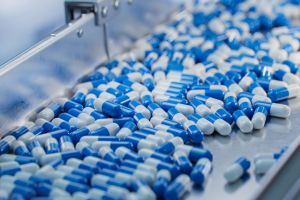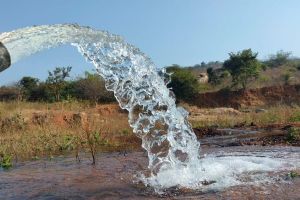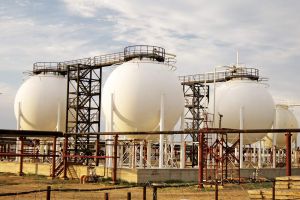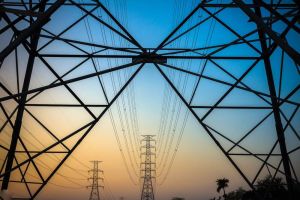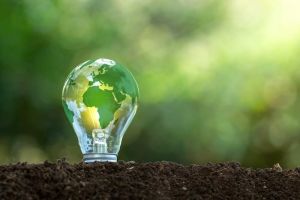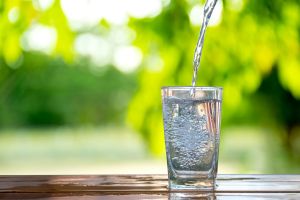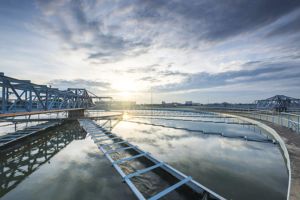TN Water Analysis
Total Bound Nitrogen
WHAT IS TOTAL BOUND NITROGEN (TN)?
We are the TOC Leader™ | Monitor TOC, COD, BOD, TN, and Toxicity Impurities in all Types of Water
The total nitrogen bound (TN) is defined as the total pollution of water by nitrogen compounds. It is an analytical parameter for water and is specified in mg/l. The pollution of nitrogen can appear in form of ammonia, ammonium salts, nitrites, nitrates and organic nitrogen compounds.
WHY is it important to MONITOR TOTAL NITROGEN IN WATER AND WASTEWATER?
Nitrogen is a natural and essential nutrient, but when industry discharges too much nitrogen it can result in algae blooms that deplete oxygen needed by aquatic life (eutrophication). Nitrogen is an essential nutrient for humans and nature. Today the nutrient contents in water are very high. A further increase would lead to eutrophication (overfertilization). Therefore, it is required to monitor this parameter by online measurement systems and thus enabling the regulation of nutrient concentrations in public water. Nitrogen-based pollutants can appear in the form of ammonia, ammonium salts, nitrate, nitrite, and organic nitrogen compounds. Monitoring nitrogen in effluent enables industry to discharge at compliant levels, protecting the environment while avoiding surcharges.
Total Bound Nitrogen water analysis provides a useful, online alternative to laboratory tests. TN is the sum of all nitrogen compounds and is standardized as DIN EN 12260:2003. This method detects all forms of nitrogen except molecular nitrogen (N2). It uses high temperature to oxidize all nitrogen compounds into nitrogen monoxide (NO). These reactions take place at temperatures about 700°C. However, higher temperatures more reliably oxidize the nitrogen compounds. The TNb method provides accurate, repeatable, chemical-free results in as little as three minutes per batch. The method is automated, enabling integration into process control systems. Since no re-agents are needed the method is also very low maintenance.
-

WHAT IS TN Water ANalysis?
TN water analysis refers to the measurement and analysis of Total Nitrogen (TN) content in water samples. Total Nitrogen represents the collective concentration of various forms of nitrogen compounds present in water, including organic nitrogen, ammonia, nitrate, and nitrite.
Monitoring total nitrogen in water is important for several reasons:
- Water Quality Assessment: Nitrogen is a crucial nutrient for aquatic ecosystems, but excessive nitrogen levels can lead to water pollution and environmental degradation. Monitoring total nitrogen helps assess the overall water quality and detect any potential pollution sources. It provides valuable information on the health and integrity of water bodies.
- Environmental Impact: Excessive nitrogen in water can cause a variety of environmental problems, including eutrophication. When nitrogen levels are high, it can stimulate the excessive growth of algae and aquatic plants. As these organisms decompose, they consume oxygen, leading to oxygen depletion in the water, which can harm fish and other aquatic organisms. Monitoring total nitrogen helps identify areas with excessive nitrogen inputs and enables targeted management strategies to mitigate the environmental impact.
- Source Identification: Monitoring total nitrogen can help identify the sources of nitrogen pollution in water. Nitrogen can enter water bodies through various pathways, such as agricultural runoff, wastewater discharges, and atmospheric deposition. By monitoring nitrogen levels at different locations and comparing the data with known sources, it becomes possible to pinpoint the major contributors to nitrogen pollution. This information is crucial for implementing effective pollution control measures and regulatory actions.
- Human Health Considerations: Nitrogen can also impact human health indirectly. Excessive nitrogen levels in water can lead to the production of harmful algal blooms, some of which can release toxins. These toxins can contaminate drinking water sources and pose risks to human health, causing illnesses or even fatalities. By monitoring total nitrogen, authorities can detect potential risks and take appropriate measures to protect public health.
- Regulatory Compliance: Monitoring total nitrogen is often a requirement to ensure compliance with environmental regulations and standards. Regulatory bodies set limits on nitrogen levels in water bodies to protect the environment and human health. Regular monitoring allows authorities to assess compliance, identify non-compliant areas, and enforce necessary measures to reduce nitrogen pollution.
-







STANDARD METHODS FOR DETERMINING NITROGEN IN WATER
- Kjeldahl nitrogen determination (EN 25663) (TKN = Total Kjeldahl Nitrogen) This method only contains ammonium nitrogen and organic nitrogen compounds.
- The determination of total nitrogen, according to the German Federal Water Act (WHG/ AbwAG) involves the measurement of the sum of all inorganic nitrogen, such as nitrate, nitrite and ammonia.
- Koroleff nitrogen determination determines all nitrogen compounds available through a persulphate digestion. Here, a reduction of the resulting nitrate occurs with a copper/cadmium alloy to nitrite, followed by a quantitative determination of nitrite.
- Nitrogen determination is standardized by the German Institute of Standardization according to DIN EN 12260:2003. This method detects all types of nitrogen except molecular nitrogen (N2) using high temperature oxidation with the support of hydrogen or oxygen.
-







DETERMINING TKN AND PERSULPHATE DIGESTION
On the market, the determination of the TNb competes with the Kjeldahl nitrogen determination (TKN) and with the persulphate digestion according to Koroleff. In contrast to the TKN, the persulphate digestion and the thermal determination of TNb determines inorganic components such as nitrite and nitrate, too. The methods according to Kjeldahl and Koroleff are time-consuming, labor-intensive and require high amounts of chemicals. Hence, these methods are not suitable for fast and accurate online determination of the nitrogen content.
-







WHAT IS DIFFERENCE BETWEEN TNB AND TKN?
Total Nitrogen (TNb) is the sum of all nitrogen forms or Total Nitrogen = Ammonia Nitrogen (NH3) + Organic Nitrogen (Nitrogen in amino acids and proteins) + Nitrite (NO2) + Nitrate (NO3) or Total Nitrogen = TKN + NO2 + NO3 (This is the formula used to measure nitrogen at wastewater plants).
- TNB (Total Nitrogen Bound): TNB refers to the total nitrogen content in a sample, including both organic nitrogen and inorganic nitrogen compounds. It encompasses various forms of nitrogen, such as nitrate (NO3-), nitrite (NO2-), ammonia (NH3/NH4+), organic nitrogen compounds, and other nitrogenous species present in the sample. TNB analysis measures the total concentration of all nitrogen species in the sample without distinguishing between their individual forms.
- TKN (Total Kjeldahl Nitrogen): TKN represents the total organic nitrogen and ammonia nitrogen content in a sample. It specifically measures the sum of organic nitrogen compounds and ammonia nitrogen. TKN analysis involves the digestion of the sample using concentrated sulfuric acid and subsequent distillation to convert organic nitrogen compounds into ammonia. The released ammonia is then captured in a receiving solution and subsequently analyzed using titration or automated colorimetric methods.
The key differences between TNB and TKN are:
- TNB measures the total nitrogen content, including both organic and inorganic nitrogen species, while TKN focuses on organic nitrogen compounds and ammonia nitrogen.
- TNB analysis does not differentiate between the different forms of nitrogen, providing a single measurement for the total nitrogen content.
- TKN analysis involves digestion and distillation to convert organic nitrogen compounds into ammonia for quantification.
- TNB analysis typically requires different analytical techniques, such as colorimetry, spectrometry, or specific ion electrode methods, depending on the nitrogen species of interest.
- TKN analysis often utilizes titration or automated colorimetric methods to measure the ammonia nitrogen concentration.
-







THERMAL TNB DETERMINATION
The thermal determination of TNb is characterized by a high degree of automation, increased accuracy as well as by short measuring cycles. Additionally, the user benefits from the fact that hazardous reagents are not necessary at thermal determination. Commonly two detections of TNb in water samples are used. The detection of the concentration is made with a chemiluminescent- or an electrochemical detector. For chemoluminescence detection ozone is required for the reaction with NO, disadvantaging the approach due to the use of hazardous reagents and the high cost. The electrochemical method is low maintenance, includes lower acquisition costs and the accuracy of its measurement is comparable with the chemiluminescence detection.
Total Nitrogen (TN), it typically involves the use of high-temperature combustion techniques. These methods are often employed to convert all nitrogen compounds, both organic and inorganic, into nitrogen gas (N2) for quantification.
One such technique is known as high-temperature combustion or high-temperature oxidation. In this method, the water sample is introduced into a combustion furnace operating at temperatures typically ranging from 900-1200°C. The organic and inorganic nitrogen compounds present in the sample are oxidized and converted into nitrogen gas.
The evolved nitrogen gas is then purified and passed through a series of traps to remove any potential interfering compounds. Finally, the purified nitrogen gas is quantified using detection techniques such as thermal conductivity detection or chemiluminescence detection.
This high-temperature combustion method provides a measure of the total nitrogen content in the sample, including both organic and inorganic nitrogen species. It does not differentiate between different forms of nitrogen or provide information about specific nitrogen compounds present in the sample.
-







THERMAL OXIDATION AT 1,200°C
THERMAL OXIDATION AT 1,200°COur water analyzers guarantee the complete oxidation of all organic and inorganic compounds with the ultra-high temperature method at 1,200°C. After the oxidation the TNb is detected by an electrochemical sensor. This is an environmentally friendly method that provides very accurate measurement results. The chemiluminescence detector is available as an option with our QuickTONultra. Operators have the option to measure the TNb in combination with TOC and COD.
Our LAR ultra-high temperature method for determining Total Nitrogen (TN) in water, typically conducted at around 1,200°C, is effective for several reasons:
- Complete Combustion: The high temperature ensures complete combustion of all nitrogen compounds present in the sample, including both organic and inorganic forms. By subjecting the sample to such extreme temperatures, virtually all nitrogen-containing compounds are oxidized, converting them into nitrogen gas (N2) for quantification.
- Removal of Interfering Compounds: The ultra-high temperature combustion effectively eliminates interfering compounds that might be present in the sample. The intense heat decomposes or converts interfering substances into their elemental components or gaseous forms, ensuring they do not affect the accurate determination of TN.
- Efficient Conversion of Nitrogen Compounds: The high temperature promotes rapid and efficient conversion of various nitrogen compounds into nitrogen gas. It ensures that all forms of nitrogen, such as nitrates, nitrites, ammonia, and organic nitrogen compounds, are transformed into N2, simplifying the analysis by focusing solely on the total nitrogen content.
- Reliable Quantification: After combustion, the evolved nitrogen gas is typically quantified using sensitive and precise detection techniques like thermal conductivity detection or chemiluminescence detection. These methods allow for accurate measurement of the concentration of nitrogen gas, which represents the total nitrogen content in the sample.
Monitoring total organic carbon (TOC), chemical oxygen demand (COD), biological oxygen demand (BOD), and total nitrogen (TN) is essential for maintaining water quality and ensuring compliance with environmental regulations.
our water quality analyzers by industry


AEROSPACE & GOVERNMENT
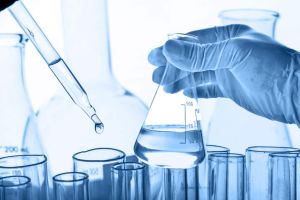

LAB & RESEARCH
